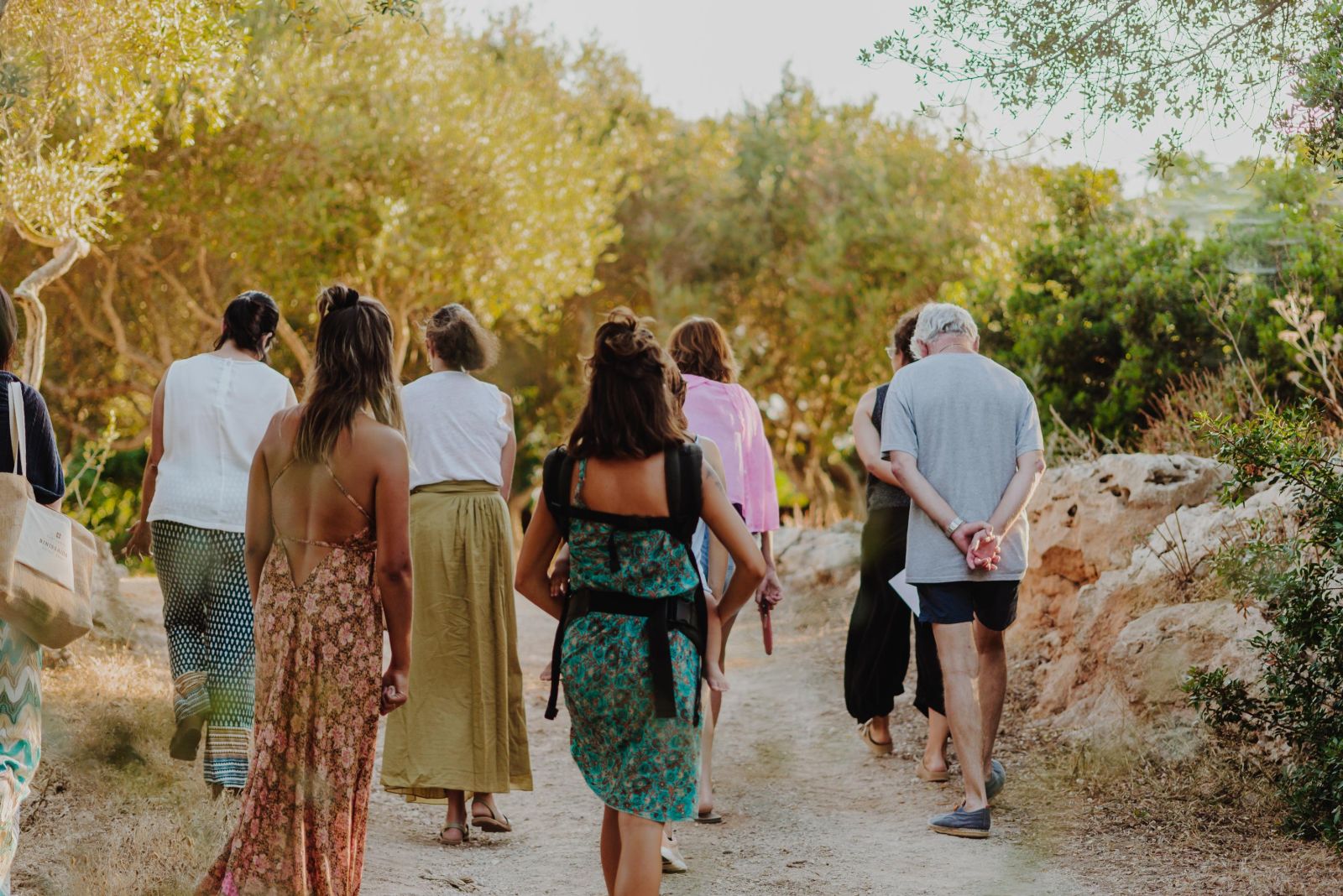


7.06.2024 - Binissaida
This June, we are launching guided tours of the estate to showcase our olive grove, during Wednesday afternoons. The agricultural part of Sant Joan de Binissaida is what gives meaning to the rest of the project, as we return to the roots of Menorca, of the land, of what defines us. Do you want to know it?
Entering by car along the road from Sant Joan de Binissaida to the agrotourism site, you will already get an idea of the importance that the olive trees represent on the estate. On both sides of the road, rows of new trees rise towards the Mediterranean sun, waiting to mature enough to bear fruit. In total, about 1,500 have been planted since the Sant Joan de Binissaida project began. In fact, some of them were already on the estate when the Quintana Seguí family acquired it in 1994. The olive-growing tradition, although not widespread in Menorca, has been present since the 2nd century B.C. From that time is the oil mill that was discovered in the municipality of Alaior, a vestige of an era that has continued to the present day.
It is that tradition, that root, that encouraged the family to promote the agricultural project of the estate, represented by the planting of olive trees. But much more extensive in concept. This is where regenerative agriculture comes into play.
Regenerative agriculture is a set of organic agricultural and grazing practices that reverses climate change by regenerating soil organic matter and restoring the biodiversity of degraded soil, which results in increased carbon dioxide capture as well as improved water cycle. Among other benefits, it expands ecosystem services, increases resilience to climate change, and strengthens the health and vitality of agricultural lands.
With the support of GOB, and thanks to its Agricultural Custody program, the Sant Joan de Binissaida estate carries out these types of practices, supervised by an agricultural company, to maintain, improve, and increase the potential of the land.
About regenerative agriculture, but also about how the olive harvesting is done, how the oil mill works, or what the correct way to conduct an oil tasting is, will be what Bea, our expert in the agricultural project, will tell you.
She will be the one who accompanies you as a group throughout the tour, during which you will discover not only the agricultural recovery but also the ethnological and architectural aspects of Sant Joan de Binissaida. The stop at the oil mill is especially interesting to learn about the process of making our organic oil, the harvest of which we carry out every autumn. And, to conclude, you will be able to taste our liquid gold in a tasting specially designed to learn how to detect the organoleptic characteristics that make an exceptional oil.
Are you interested in learning more about our oil?